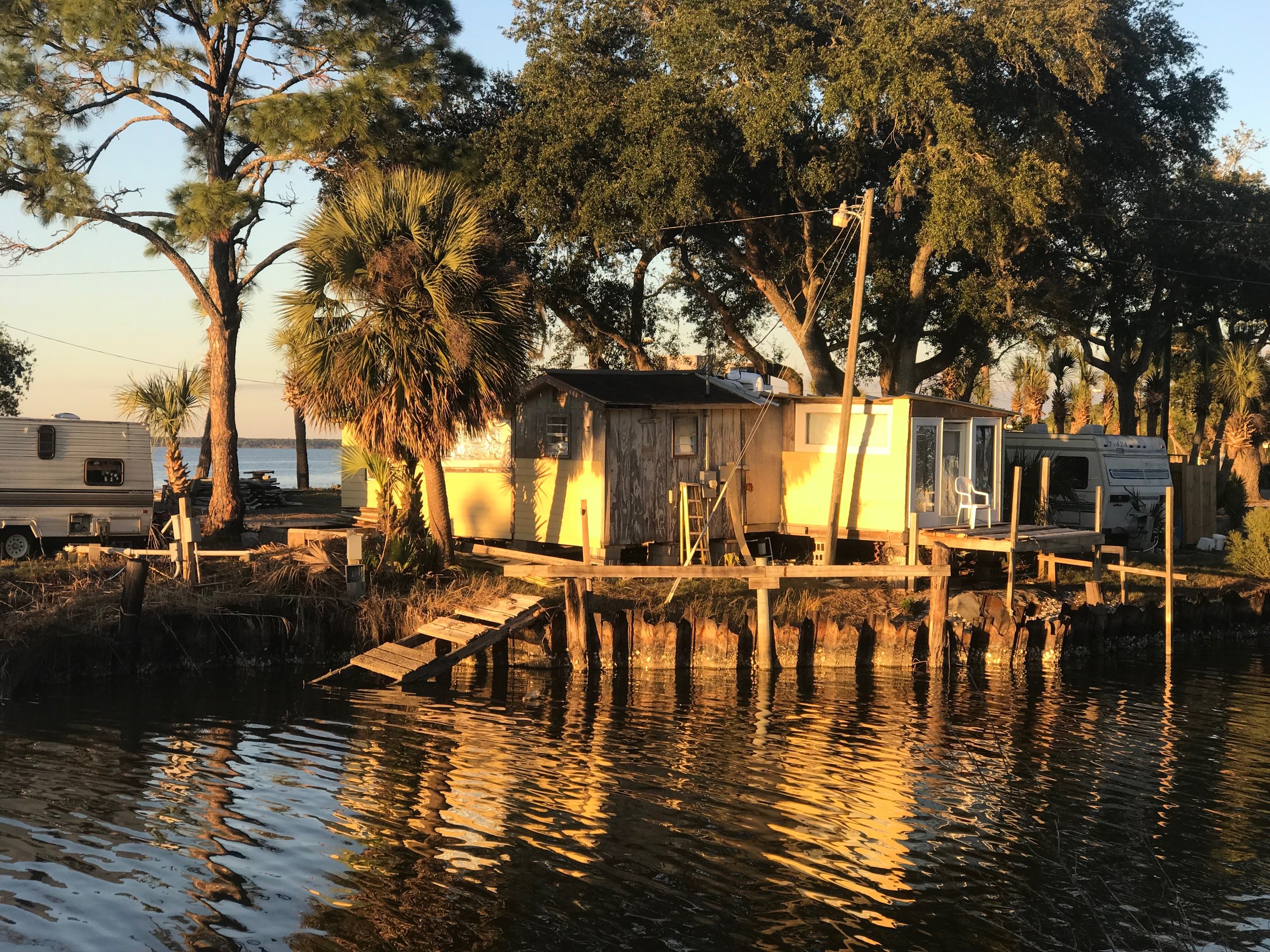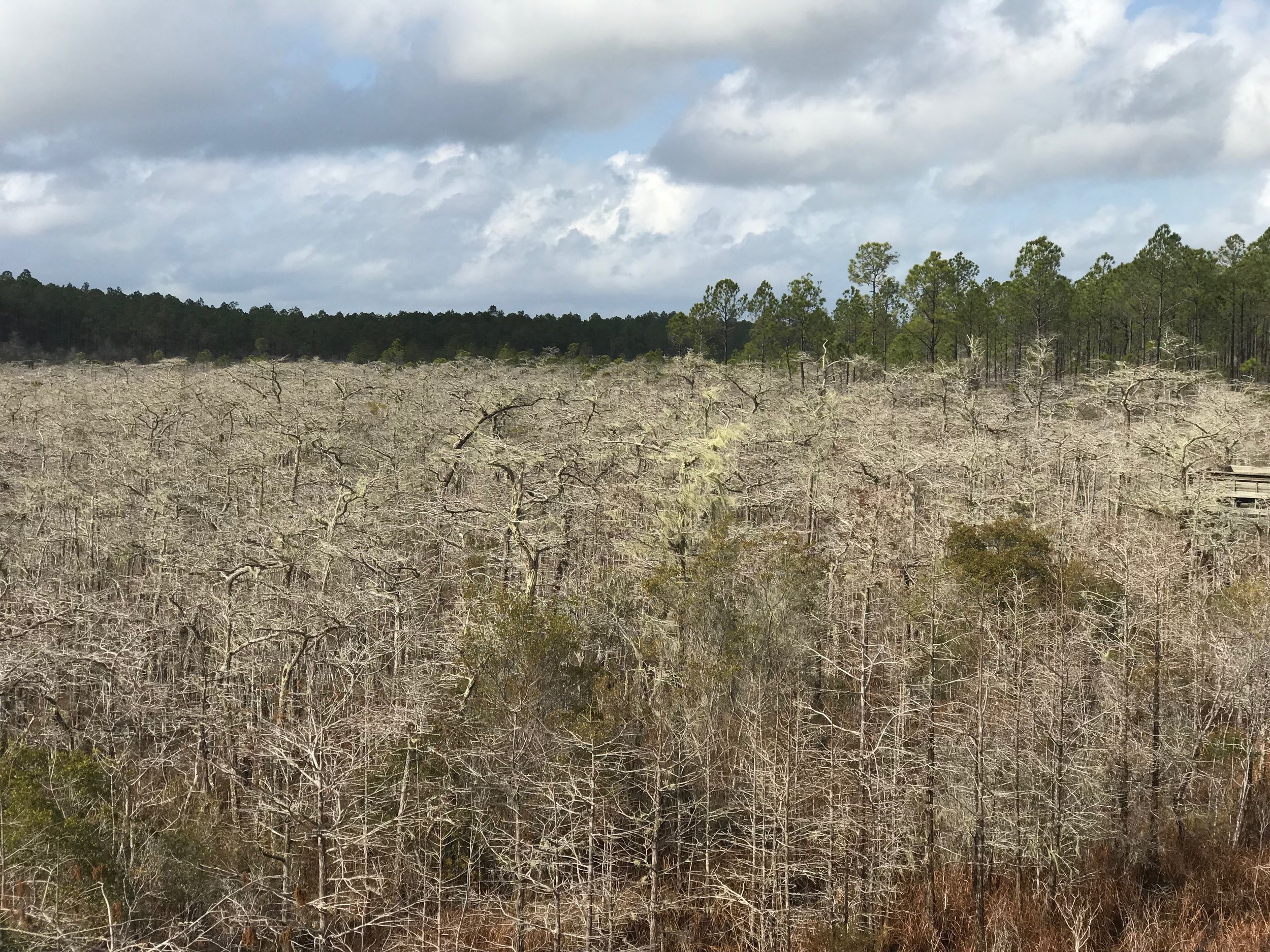Before I forget, I wanted to share a few words and photos of what they call it the Forgotten Coast – the Gulf coast on the eastern part of Florida’s Panhandle. It’s the section of coastline that wraps around what’s known there as the Big Bend, though I think of it as Florida’s armpit, with no negative implications intended.
Much of the Forgotten Coast feels like Old Florida – pre-AC, pre-Disney, pre-wealthy tourists. I saw no gated communities, no high-rise condos with water views, and very few national chains.
There’s tourism here, especially in the summer, when families come from all over the South in search of ocean breezes. But there are other industries as well. In Tate’s Hell State Forest (great name, and there’s a story behind it) and Apalachicola National Forest, public/private partnerships have carved up and drained what once were swamps and grasslands so they can grow thousands of acres of scratch pine forest. The pines appear to be harvested before they can grow thick enough to make a 2-by-4. It’s mostly chipped up for composite products, a local explained.
In Apalachicola and Eastpoint, it’s all about oysters. Ten percent of the nation’s commercial oysters come from Apalachicola Bay. Oystermen go out daily in small boats, with tongs with 14-foot long handles. They use the tongs to dig into the sandy bottom of the bay and scoop oysters into the boat, which are then measured, with the ones under a certain size returned immediately to the sea. It reminds me of lobster-fishing in Maine, in that it is labor-intensive work no one has yet figured out a way to industrialize.
The white sand beaches are gorgeous on the Forgotten Coast. On St. George Island, the homes are fancier, prices are higher, and a beach-tourist vibe predominates. But in Eastpoint and Carrabelle, a lot of people are barely scraping by. If you want a place with miles of deserted beaches, tons of great seafood, but with few pretentions, don’t forget the Forgotten Coast.





